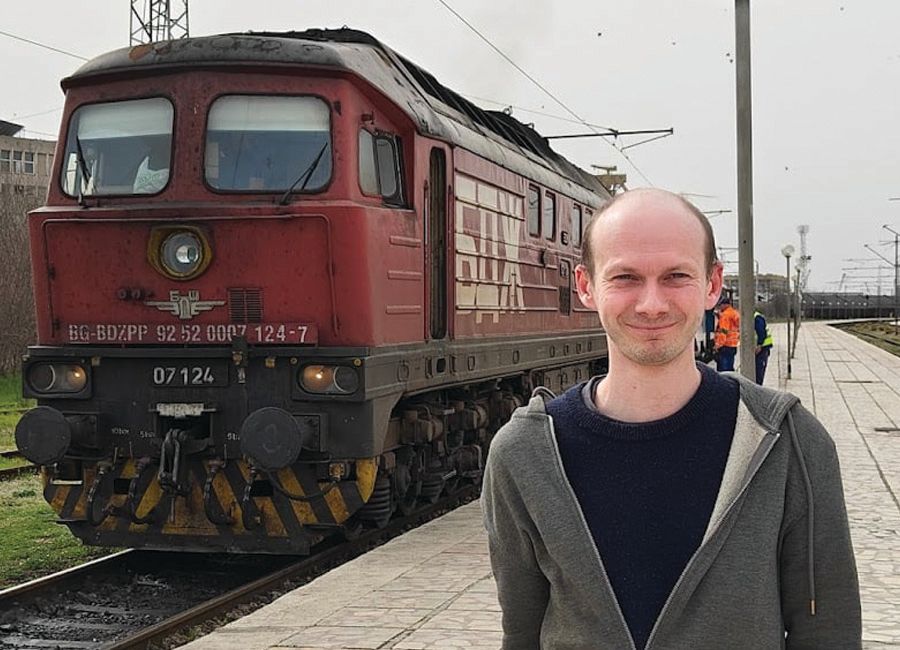THEY LOVE IT WHEN THE PLAN COMES TOGETHER…

As the festive season approaches, Exchange Extra finds out how our train planning and rostering colleagues prepare for one of the busiest times of the year

Imagine trying to solve a fiendishly complicated jigsaw puzzle, with pieces that move, change shape and sometimes vanish!
That’s not unlike the scenario faced by our train planning and resourcing teams, as they work to make sure our customers, fleet and colleagues get to where they need to be safely and on time.
On top of these regular challenges, the festive season brings unique complications with engineering works, revised schedules, changing travel patterns and often bad weather. It makes Santa’s workload look like a doddle!
Luckily, our teams have years of experience to call on and a passion for problem-solving.
Train planning consists of long- and short-term planning, as well as train crew diagramming.
Far more than just organising passenger timetables, it includes making sure trains are where they need to be at the end of the day, whether for maintenance, cleaning or overnight ‘parking’ for the next day’s scheduled services – a huge logistical task in itself.
The driver rostering team then utilise the available resource to cover the train service as much as they can.



“For the best part of two weeks over the holiday period, the long-term plan effectively doesn’t apply,” explains Ian Ross, senior train planning specialist. “We have an amended timetable on Christmas Eve, no service on Christmas Day, and on Boxing Day we are one of the few operators that run a service. New Year’s Eve is a huge day for us with services all night on two lines.”
Ian Ross
Ian Ross
Christmas is also the busiest period for engineering works, meaning an already complex puzzle of moving trains and crew around is made even harder to solve.
For our train planners, the preparation begins early. The team gets high-level information on major planned closures from Network Rail about a year in advance.
At 26 weeks, they get more of the detail around exact track closures, and much of the serious planning begins. With 16 weeks to the first track possessions, all the rail operators submit their plans for the period. Network Rail then checks them for any conflicts.
“That’s where it gets tricky,” says Ian. “There are freight and London Underground services sharing lines with us, so a lot of potential conflicts. I’ll usually spend a couple of days based at Network Rail, collaborating on any changes.”
Once a new plan is agreed upon, the details are fed to our rostering team, responsible for ensuring each diagram (a driver’s daily work plan) is rostered.
Their key work begins closer to Christmas.



“The holiday period is particularly difficult to cover,” says head of rosters Matt Healy. “Christmas has the peak of annual leave requests to consider, and winter is always a time when you have greater unavailability.
Matt Healy
Matt Healy
“When certain parts of the network are closed, it makes it even more complicated. For example, we might normally have to get a train from Stratford to Euston at the end of the day. But if Euston is closed, and we have to berth it at Willesden, this could mean that a driver’s original diagram is cancelled. We then have to review the best plan of action, and see where it is best suited to allocate the work.
In a city with one of the busiest transport networks in the world, even the best-laid plans can unexpectedly change. Closures for urgent repairs, changed maintenance plans or disruption to other operators’ services all impact London Overground.
“Late changes are the biggest issue,” says Ian. “And at Christmas and New Year, there’s a lot more to keep on top of.
“The consequence of getting it wrong is having stock and people in the wrong place at the wrong time. That would lead to a poor service performance, which is bad for customers, bad for the business and bad for colleagues too.”
Fortunately, these challenges are exactly what the teams revel in and, with over 20 years in rostering, Matt is particularly aware of the need to plan well.
“We are all happy to pull up our sleeves and get stuck in when things need sorting out,” he says.
“I love being given a problem and finding the best solution – not just the quickest but the most cost-effective. It’s like a giant puzzle to solve and it’s very satisfying when you are able to do that.”








